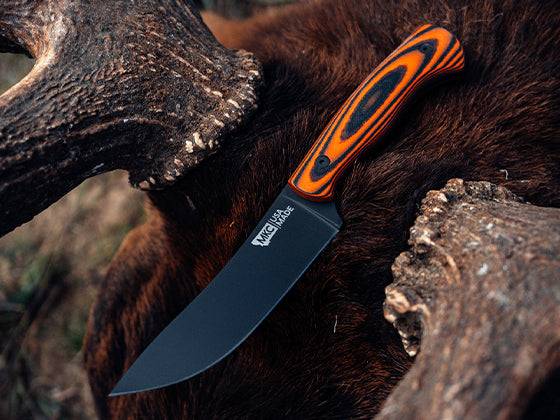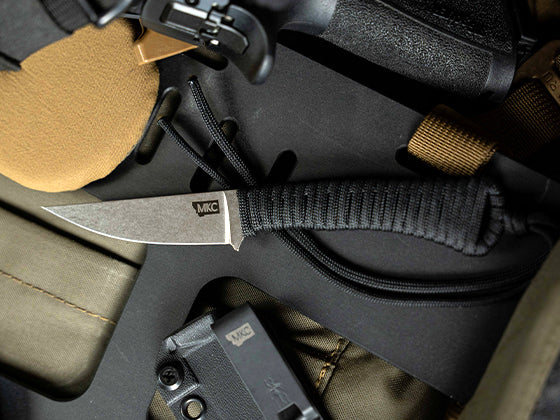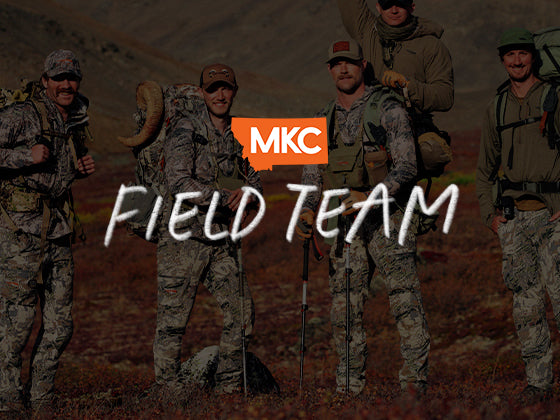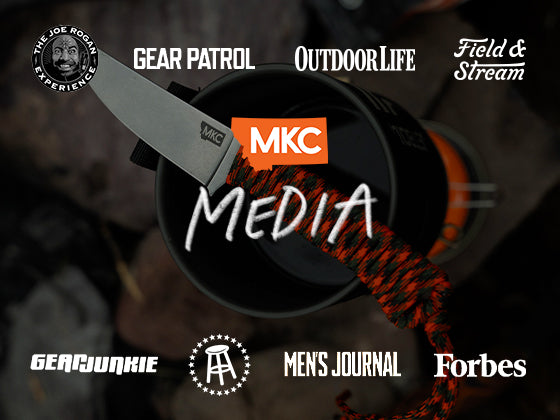Whitetail deer hunting is in my blood. My family’s from the Deep South, and it’s a fixture of our culture and heritage. Whitetail was the first big game animal I ever hunted, and it’s what got me hooked.
Even with that history, I’ve made my fair share of mistakes, and I’d like to share what I’ve learned. If you want to learn how to hunt whitetail deer, you’re in the right place.
Understanding Whitetail Deer Behaviors
Understanding your prey is the first and most important step to tracking them down. If you understand where the deer will be and how they’ll act, you’re halfway to victory.
Whitetail behavior heavily relies on the time of year. I like to break it down into three phases: pre-rut, rut, and post-rut.
During pre-rut season, focus on areas with high doe populations. As rut approaches, bucks will move into these areas and become more active. You may see them mark their territory with rubs and scrapes, especially in the mornings.
Focus your hunting strategies on thickets and travel corridors, as close to large doe groups as possible.
During rut season, you’ll see fewer does, but bucks can be active at any time of day. This is an ideal time to move to tree stand hunting, especially if you can bunker down in an area with high doe concentrations. The does will seek cover during this time, too, so if you stay nearby, rutting bucks will eventually appear.
During post-rut season, set your sights on whitetail deer food sources. Rutting pressure has died down by now, and the bucks will spend more time searching for food. Keep weather conditions in mind, as cold weather and calm winds will make deer more active.
Mastering the Art of Scouting
Whitetail deer are flighty and nervous animals. They tolerate little in the way of pressure and change. Most of my whitetail deer hunting tips involve observing them without changing their natural behavioral patterns. To do that, you need to master the art of scouting.
First, rely on game cameras whenever possible. Mobile trail cameras work well, too. Cameras help keep human presence to a minimum, reducing the pressure on your prey.
Try to identify bedding areas, travel corridors, and food sources during your scouting. Set up your stands ahead of time and anticipate where the deer will move. Above all, tread lightly and leave as few traces of your presence as possible.
Why Wind Direction Matters
Wind is everything on a whitetail deer hunt. You can’t beat it; you have to work with it, or it’ll come back to bite you. A whitetail’s nose is its first line of defense against predators, and it can detect scents carried over long distances.
Plenty of products on the market can help mask your scent, but don’t rely too heavily on them. Only hunt when the wind is in your favor.
More often than not, deer change their pattern when a hunter’s scent reaches them, and you might be out of luck for the rest of the season. Don’t push it — respect the wind.
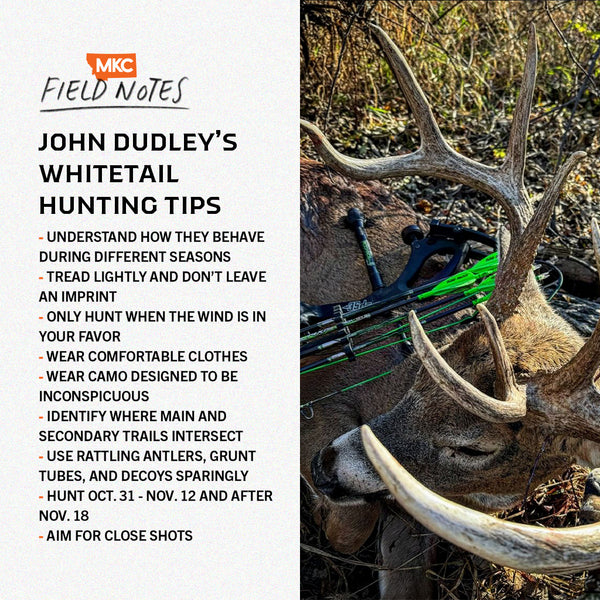
Selecting the Right Hunting Gear
Some hunters go out with a top-of-the-line kit. Others make it work with the essentials. My deer hunting tips fall in the middle.
You’ll be successful if you can sit still for long periods — 13+ hours, sometimes. You’ll need to prepare both physically and mentally.
Start with comfortable base layers and outerwear — my go-to brand is Sitka. Good, insulated clothing will help you sit in freezing temperatures with little movement.
Aside from that, don’t be afraid to explore new technology. Convenient apps can help you find food sources, stand locations, wind directions, forecasts, and more. I personally use the app Huntwise, but some hunters use others like onX Hunt.
Camouflage: The Hunter’s Disguise
Whitetails’ eyesight is nothing to scoff at. They’re incredible at detecting movement and memorizing their surroundings. They detect changes in their environment right away.
A good set of camo outerwear helps break up your outline, blending you in with your surroundings. The whitetails may still notice that something’s different when they look in your direction, but if you’re camouflaged well enough, they won’t get spooked.
Look for a camo pattern with depth — something designed to look inconspicuous. This helps the deer see “through” you. Avoid solid-colored camo, as they can still detect your silhouette.
Finding the Perfect Hunting Spot
One of my best whitetail deer hunting tips is this: there are “killing trees” and “hunting trees.” In the same 40-acre area, 70–80% of deer will pass within range of one or two trees. The bulk of hunting action occurs in these prime spots.
Your job is to consider the best way to hunt from these spots, all while maintaining favorable wind direction and keeping an eye on your prey. You may have to tweak your position as the wind shifts, but your plan should account for most conditions. You may not be able to hunt from your preferred “killing spot” if the wind isn’t in your favor.
When tree stand hunting, I like to choose a spot that gives me coverage for each wind type. I might have 20 different stand locations in one 40-acre area, but I could probably narrow it down to four if I had to.
Following Deer Trails and Patterns
Following deer trails and patterns is like routing on Google Maps. If you wanted to get somewhere fast, you’d take the most direct route. However, if you wanted privacy, you’d follow the backroads, even if it took longer.
Like us, deer take different routes to get where they need to go. Mature bucks often use secondary trails paralleling main trails for added security and cover. The routes they choose change depending on the time of year.
My hunting strategies center on identifying these trails. Secondary trails sometimes have thicker cover, and they may be a better option for intercepting mature bucks. Intersections where primary and secondary trails cross can help you optimize your stand placement as well.
Making the Right Call
Calls and decoys can be effective, but where, when, and how you use them makes a huge difference.
Using a deer call willy-nilly won’t always attract a buck. If you use it at the wrong time, it’s just as likely to drive your prey away.
Rattling antlers and grunt tubes can be effective during pre-rut and rut seasons, when bucks are sparring and seeking does. Don’t cry wolf, though — if you use these calls constantly, deer will learn they aren’t a threat.
Decoys can help, too, but only when placed downwind, as deer can detect that decoys are artificial by scent. Decoys work best during pre-rut and rut seasons. A buck will be more inclined to investigate an apparent rival during these active breeding periods.
Timing Your Hunt
What’s the best time to hunt whitetail deer, and why? In the Midwest, it’s from Halloween week to Thanksgiving. Key dates are from Oct. 31 to Nov. 12, and after Nov. 18.
Early in this period, bucks follow does closely, making them less visible. As the rut progresses, bucks cover more ground, searching for potential mates. Post-rut, around Thanksgiving, they focus on food. In my opinion, Thanksgiving week through the start of gun season is the ideal time to bowhunt.
Essential Tips for Shot Placement
Whitetails are incredibly reactive. Even if you do everything right, their razor-sharp instincts can cause you to miss the perfect shot. I prefer to shoot at around 35 yards or less — and even 35 yards can be a stretch.
I always like to come up from underneath the animal and bring my pin up to the bottom third of the vitals area. This gives me extra room if the animal ducks, ensuring I don’t miss high. I’d much rather miss a little low since that’s still a kill-shot area.
I like to hug the back edge of the leg for broadside shots, and on angled shots, I place the pin between the front shoulder blades.
The Art of Tracking and Retrieving
Getting the perfect shot won’t do you any good if you can’t track and retrieve your kill. One of my biggest whitetail deer hunting tips, at least for bowhunters, is to use a lighted nock. It ensures 100% certainty of the impact point, which is invaluable for tracking.
If I know I have a perfect point of entry, I can take my time packing up and pursuing the animal. I know it’ll go down soon.
That exact point of entry also helps as you determine blood signs and your collection strategy. For example, dark, maroon-purple blood can indicate a liver hit, which might require a longer wait time. Green or watery blood from a gut hit can mean an extra day or more in the wilderness to wait for the animal to expire.
Always pursue a clear blood trail as if it won’t stop, but be cautious of spotty or fading blood that may indicate a longer recovery effort. Let your prey fully expire before approaching.
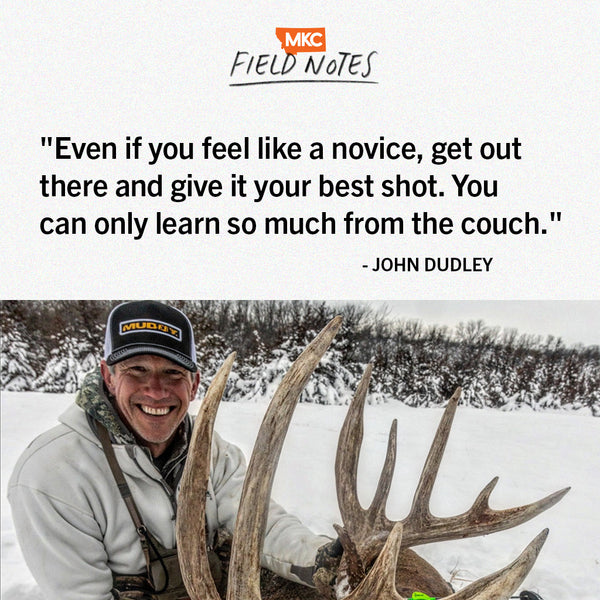
Final Whitetail Deer Hunting Tips
There are a lot of hunting strategies and whitetail deer hunting tips out there. Even with my experience, I learn new lessons all the time.
Even if you feel like a novice, get out there and give it your best shot. You can only learn so much from the couch.
with John Dudley, Decorated Professional Archer and Founder of Nock On Archery
























